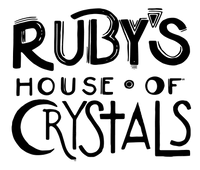Rainbow Tourmaline Chips (4oz)
$14.00
Tourmaline General Information
Tourmaline is one of the most significant gems for metaphysical use, and it includes a wide variety of different forms, colors and energy spectrums.
Tourmaline can be found on every continent but fine tourmaline gems are considered rare and come in high prices.
Tourmaline History and General Information
Tourmaline made its way into the commercial gem industry in 1876 when George Kunz sold a green tourmaline gem to the famous Tiffany and Co. In the ensuing years, tourmaline gained great popularity as a gemstone, and its metaphysical properties have made it a favorite to metaphysical collects and practitioners.
Tourmaline is found in a wide variety of colors from black to bluish-black, dark brown, yellow, medium brown, blue to neon blue, lime to dark forest green, red and reddish purple, yellow, pink, and colorless.
Tourmaline is the official birthstone for October as adopted by the American National Association of Jewelers in 1912. It also the traditional birthstone for October, the stone for the Zodiac sign of Leo, and the accepted gem for the 8th wedding anniversary.
Sources of Tourmaline:
Tourmalines are mined everywhere in the world including Africa, Afghanistan, Africa, Australia, Brazil, Kenya, Madagascar, Mozambique, Nigeria, Pakistan, Siberia, Sri Lanka, Tanzania, the USA, and Zimbabwe.
History, Folklore and Legend:
Ancient legend says that tourmaline is found in all colors because it traveled along a rainbow and gathered all the the rainbow's colors.
The name tourmaline comes from the Sinhalese term “turmali,” which was the name given to all colored crystals on the island of Sri Lanka at that time. This all inclusive name indicates the inability of ancient gem dealers to differentiate tourmaline from other stones. In fact, at one time in history, pink and red tourmaline were thought to be rubies. Pink tourmaline tends to be pinker in color than ruby. However, their similarities in appearance are so strong that the stones in the Russian crown jewels believed to be rubies for centuries, are now thought to be tourmalines.
The Chinese have use tourmaline for centuries to carve and engrave figures. Some are even still on display in museums, a testament as to the durability of the stone.
For centuries, various cultures have had different beliefs about what virtues the tourmaline can bring to the wearer.
Tourmaline is one of the most significant gems for metaphysical use, and it includes a wide variety of different forms, colors and energy spectrums.
Tourmaline can be found on every continent but fine tourmaline gems are considered rare and come in high prices.
Tourmaline History and General Information
Tourmaline made its way into the commercial gem industry in 1876 when George Kunz sold a green tourmaline gem to the famous Tiffany and Co. In the ensuing years, tourmaline gained great popularity as a gemstone, and its metaphysical properties have made it a favorite to metaphysical collects and practitioners.
Tourmaline is found in a wide variety of colors from black to bluish-black, dark brown, yellow, medium brown, blue to neon blue, lime to dark forest green, red and reddish purple, yellow, pink, and colorless.
Tourmaline is the official birthstone for October as adopted by the American National Association of Jewelers in 1912. It also the traditional birthstone for October, the stone for the Zodiac sign of Leo, and the accepted gem for the 8th wedding anniversary.
Sources of Tourmaline:
Tourmalines are mined everywhere in the world including Africa, Afghanistan, Africa, Australia, Brazil, Kenya, Madagascar, Mozambique, Nigeria, Pakistan, Siberia, Sri Lanka, Tanzania, the USA, and Zimbabwe.
History, Folklore and Legend:
Ancient legend says that tourmaline is found in all colors because it traveled along a rainbow and gathered all the the rainbow's colors.
The name tourmaline comes from the Sinhalese term “turmali,” which was the name given to all colored crystals on the island of Sri Lanka at that time. This all inclusive name indicates the inability of ancient gem dealers to differentiate tourmaline from other stones. In fact, at one time in history, pink and red tourmaline were thought to be rubies. Pink tourmaline tends to be pinker in color than ruby. However, their similarities in appearance are so strong that the stones in the Russian crown jewels believed to be rubies for centuries, are now thought to be tourmalines.
The Chinese have use tourmaline for centuries to carve and engrave figures. Some are even still on display in museums, a testament as to the durability of the stone.
For centuries, various cultures have had different beliefs about what virtues the tourmaline can bring to the wearer.


